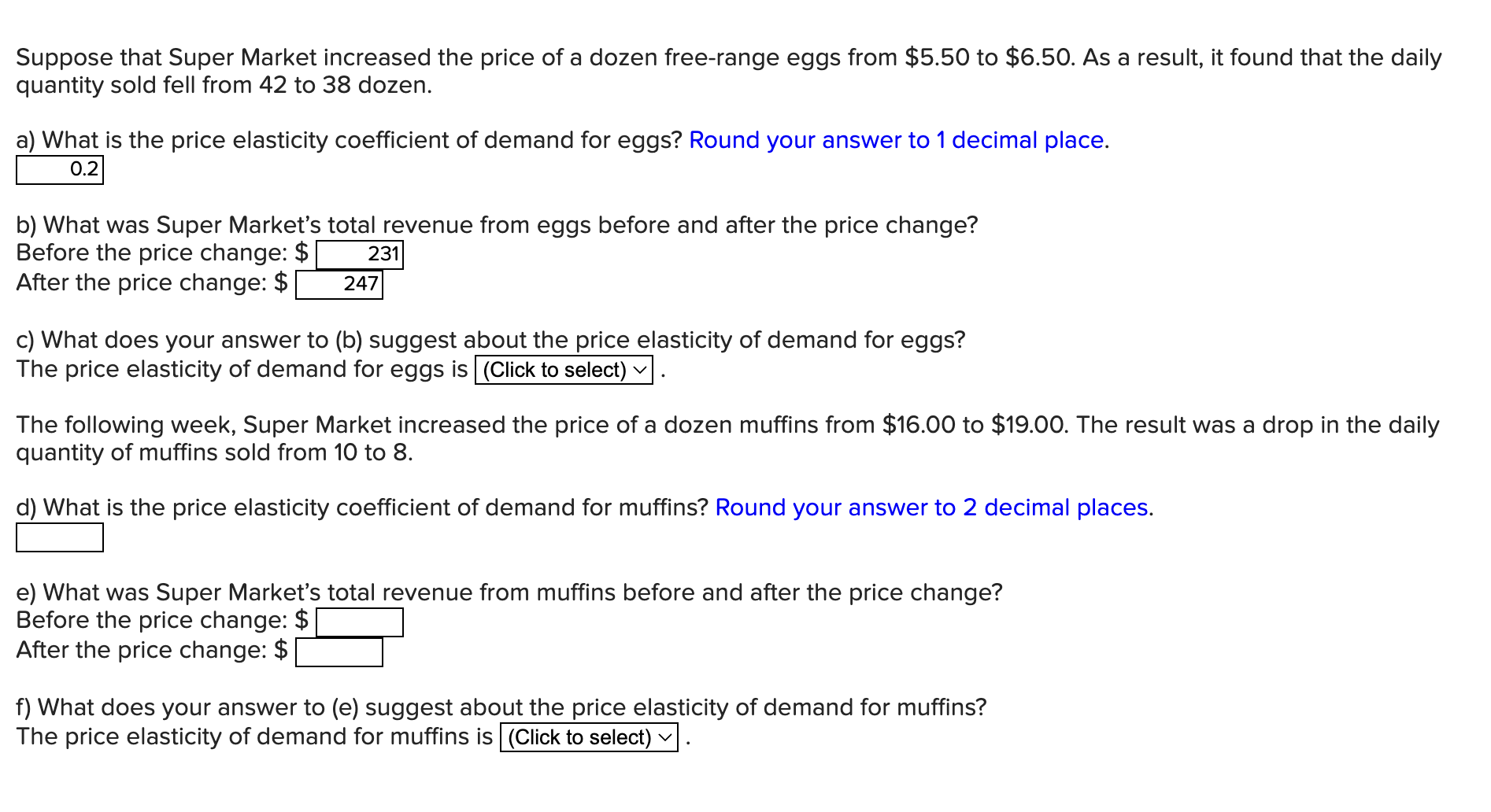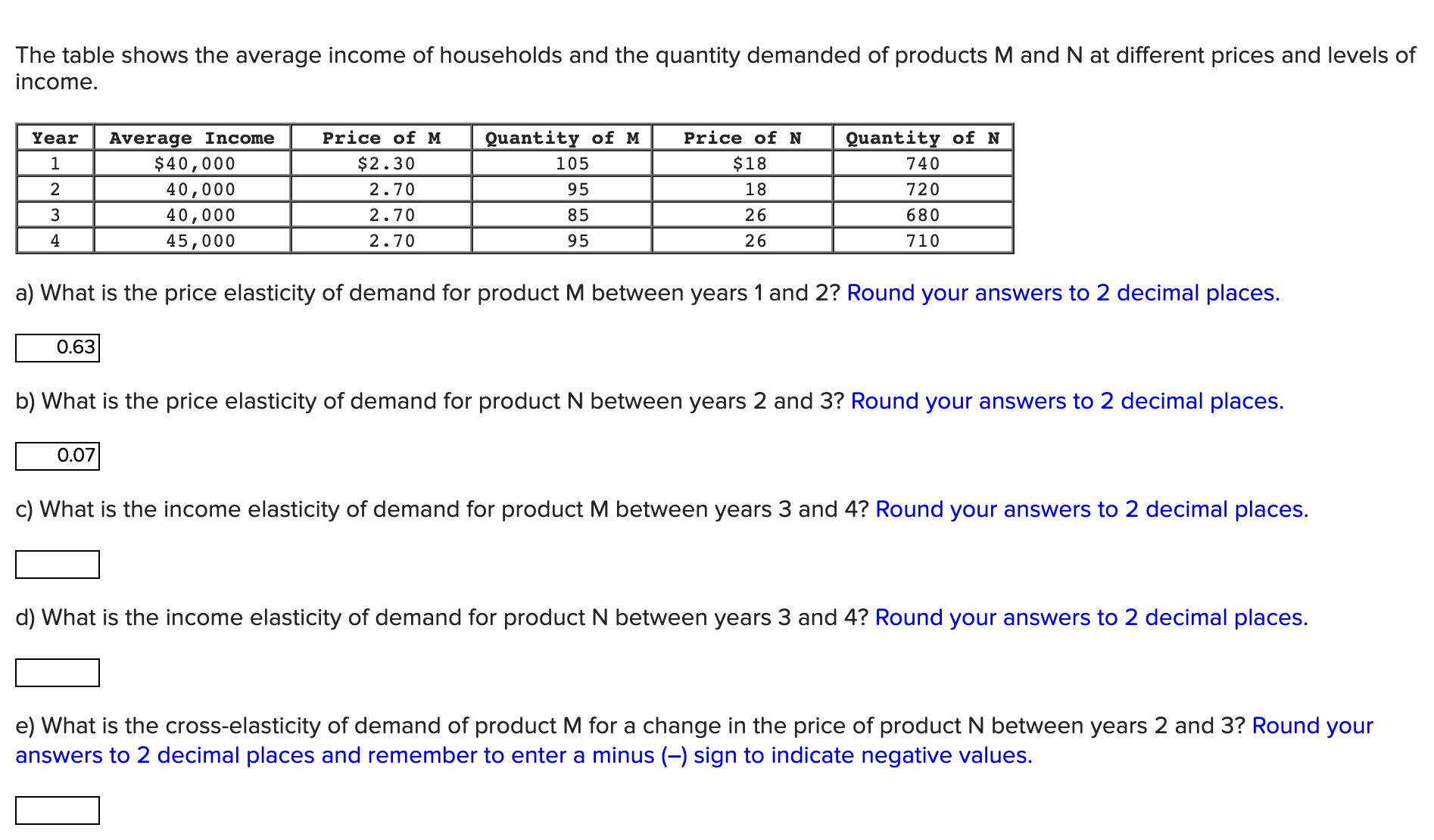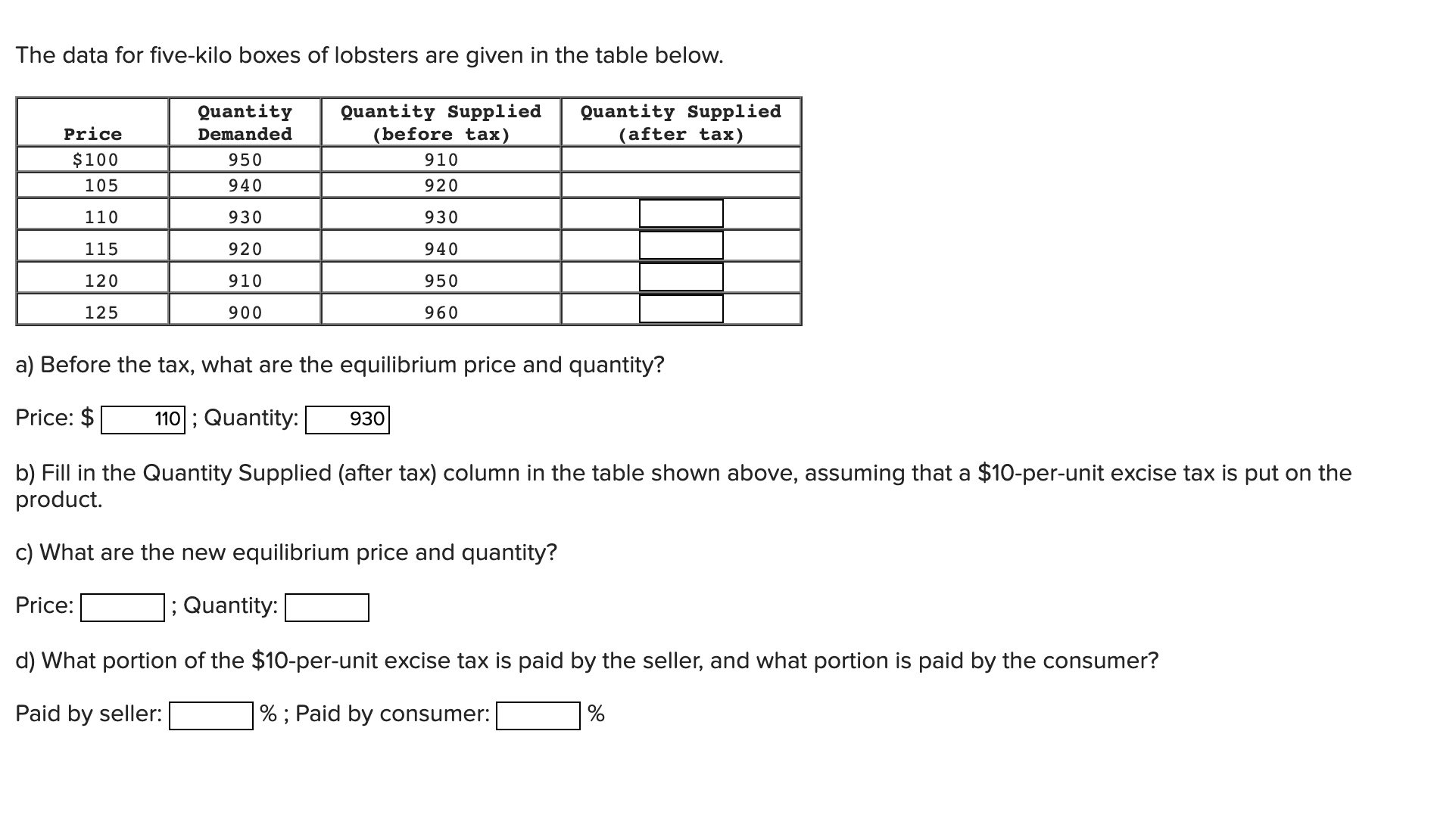Answered step by step
Verified Expert Solution
Question
1 Approved Answer
Suppose that Super Market increased the price of a dozen free-range eggs from $5.50 to $6.50. As a result, it found that the daily



Suppose that Super Market increased the price of a dozen free-range eggs from $5.50 to $6.50. As a result, it found that the daily quantity sold fell from 42 to 38 dozen. a) What is the price elasticity coefficient of demand for eggs? Round your answer to 1 decimal place. 0.2 b) What was Super Market's total revenue from eggs before and after the price change? Before the price change: $ After the price change: $ 231 247 c) What does your answer to (b) suggest about the price elasticity of demand for eggs? The price elasticity of demand for eggs is (Click to select) The following week, Super Market increased the price of a dozen muffins from $16.00 to $19.00. The result was a drop in the daily quantity of muffins sold from 10 to 8. d) What is the price elasticity coefficient of demand for muffins? Round your answer to 2 decimal places. e) What was Super Market's total revenue from muffins before and after the price change? Before the price change: $| After the price change: $ f) What does your answer to (e) suggest about the price elasticity of demand for muffins? The price elasticity of demand for muffins is (Click to select) The table shows the average income of households and the quantity demanded of products M and N at different prices and levels of income. Year Average Income 1 $40,000 Price of M $2.30 Quantity of M Price of N Quantity of N 105 $18 740 2 40,000 2.70 95 18 720 3 40,000 4 45,000 2.70 2.70 85 26 680 95 26 710 a) What is the price elasticity of demand for product M between years 1 and 2? Round your answers to 2 decimal places. 0.63 b) What is the price elasticity of demand for product N between years 2 and 3? Round your answers to 2 decimal places. 0.07 c) What is the income elasticity of demand for product M between years 3 and 4? Round your answers to 2 decimal places. d) What is the income elasticity of demand for product N between years 3 and 4? Round your answers to 2 decimal places. e) What is the cross-elasticity of demand of product M for a change in the price of product N between years 2 and 3? Round your answers to 2 decimal places and remember to enter a minus (-) sign to indicate negative values. The data for five-kilo boxes of lobsters are given in the table below. Quantity Supplied (before tax) Quantity Supplied (after tax) Quantity Price Demanded $100 950 910 105 940 920 110 930 930 115 920 940 120 910 125 900 950 960 a) Before the tax, what are the equilibrium price and quantity? Price: $ 110; Quantity: 930 b) Fill in the Quantity Supplied (after tax) column in the table shown above, assuming that a $10-per-unit excise tax is put on the product. c) What are the new equilibrium price and quantity? Price: ; Quantity: d) What portion of the $10-per-unit excise tax paid by the seller, and what portion is paid by the consumer? Paid by seller: %; Paid by consumer: %
Step by Step Solution
There are 3 Steps involved in it
Step: 1

Get Instant Access to Expert-Tailored Solutions
See step-by-step solutions with expert insights and AI powered tools for academic success
Step: 2

Step: 3

Ace Your Homework with AI
Get the answers you need in no time with our AI-driven, step-by-step assistance
Get Started


